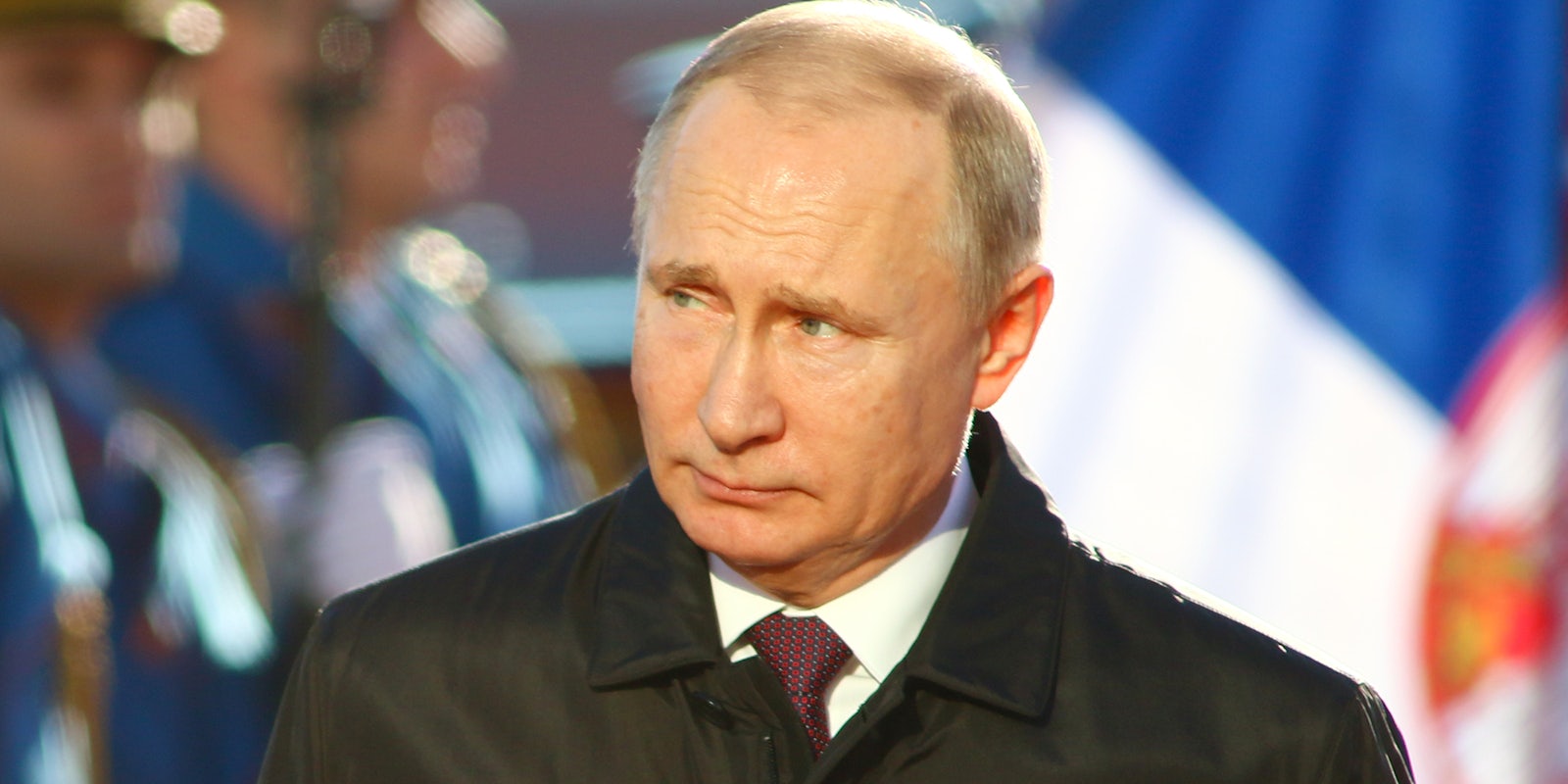On Friday, journalist Matt Taibbi shared the latest in his series of reports on Twitter prior to Elon Musk‘s takeover, this time revealing the behind-the-scenes discussion about a prominent third-party application: Hamilton 68.
The dashboard launched at the height of the panic over Russian influence in American politics, after former President Donald Trump won the 2016 election and the Justice Department began an investigation into his campaign and its potential ties to Russia.
Hamilton 68—a reference to one of Alexander Hamilton’s Federalist Papers about foreign influence—launched in August 2017 and said it was a “near real-time” look at a list of over 600 Twitter users who actively spread Russian propaganda on Twitter.
“We’re not necessarily saying everyone in this list is getting a paycheck from the Kremlin,” the organization said when it launched, according to Reuters, but that it has “very high confidence” the accounts it tracked were spreading Russian disinformation artists.
According to Taibbi, whose been provided access to backlogs of Twitter’s internal documents by Musk, the list was essentially bunk.
When it was active, the list prompted a number of stories about Russian influence on the platform—including three by the Daily Dot—about Russia co-opting American news events, like the Parkland school shooting, to sow division on the platform and U.S. society writ large.
But documents Taibbi reviewed said Twitter was uncertain about the dashboard from the get-go and did not believe anyone on it should be qualified or quantified as a foreign agent.
According to a review it commissioned, just 36 of the 644 accounts were physically registered in Russia. Taibbi also unearthed some damning quotes from Twitter executives that he shared, who didn’t believe that Hamilton 68 was accurately representing his platform.
Yoel Roth, Twitter’s former head of Trust and Safety, said, “I think we need to just call this out on the bullshit it is.”
According to a screenshot of an email purportedly sent by Roth, the accounts were neither Russian nor bots attempting to shape the discourse.
Hamilton 68 never published the accounts they tracked, but Twitter was able to access it and, according to Taibbi, prominent liberals and conservatives were on the list, including one scholar on the U.S. Constitution.
“I’ve written a book about the U.S. Constitution,” Taibbi said lawyer Dave Shestokas responded to him. “How I made a list like this is incredible to me.”
The founders of Hamilton 68, the German Marshall Fund and the Alliance for Securing Democracy, responded to Taibbi, claiming they never said they tracked Russian accounts.
“The dashboard was an analysis of networks that (1) reliably amplified Russian propaganda and disinformation, either wittingly or unwittingly, and (2) primarily targeted audiences in the United States,” they wrote in response. “This would account for the inclusion of some genuine Americans in the account list—not because they were labeled by analysts as being a bot or even Russian, but because the analytic techniques used identified them as being a part of a network that either promoted or engaged with Russian propaganda targeting American audiences.”
Branding everything as a Russian influence campaign could, though, just as easily be viewed as a U.S. government operation, especially given the number of U.S. government employees who have passed through the Alliance for Securing Democracy, which also launched in 2017.
The dashboard’s influence, big as it may have been, was short-lived.
One of the founders, Clint Watts, said to BuzzFeed in February 2018 that he “I’m not convinced on this bot thing.”
And the board, as it existed, was retired in December 2018, re-emerging as Hamilton 2.0. In this new iteration, it notes in bold that it would be “INCORRECT to, without further analysis, label anyone or anything that appears on the dashboard as being connected to state-backed propaganda.”



